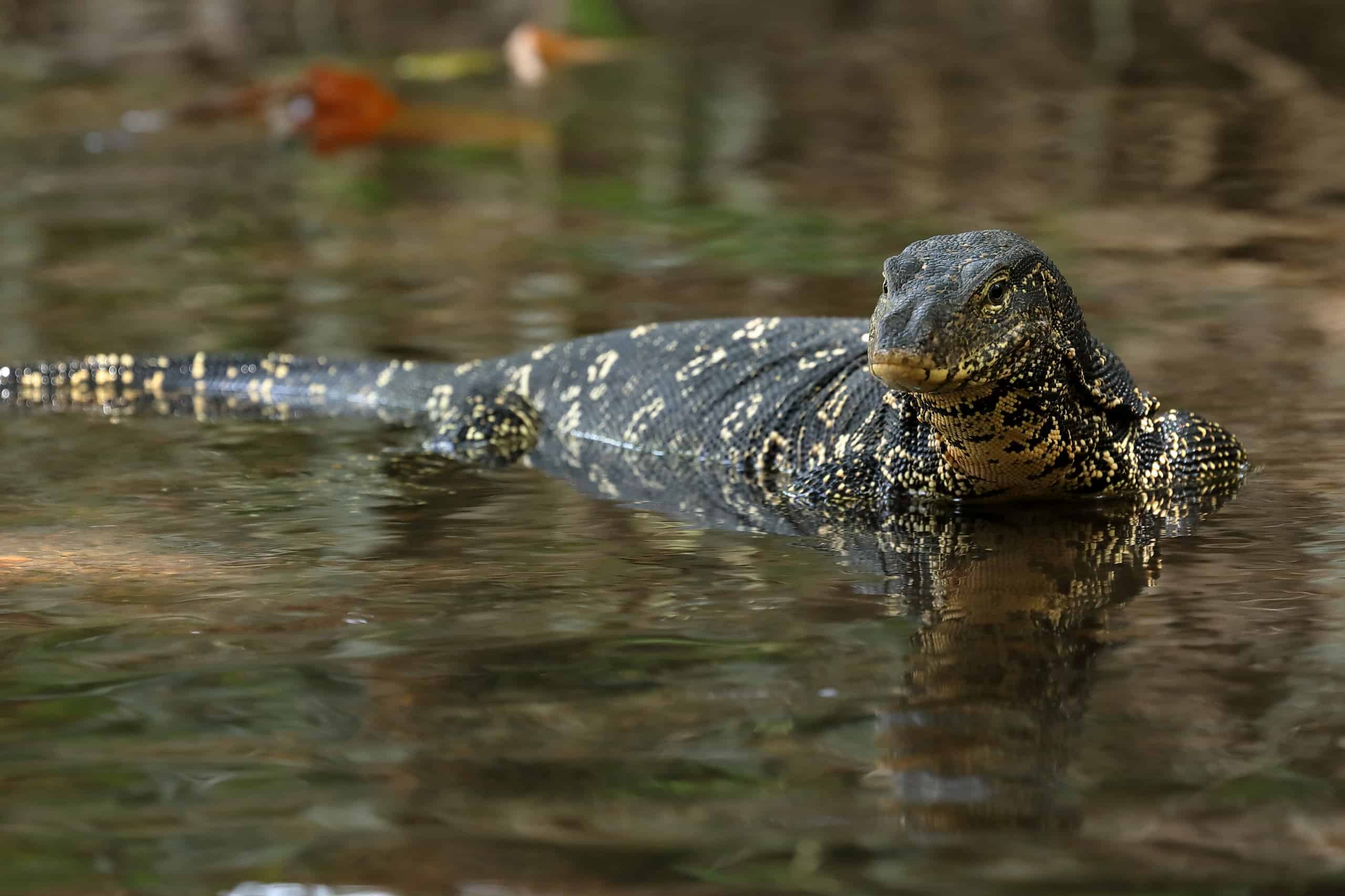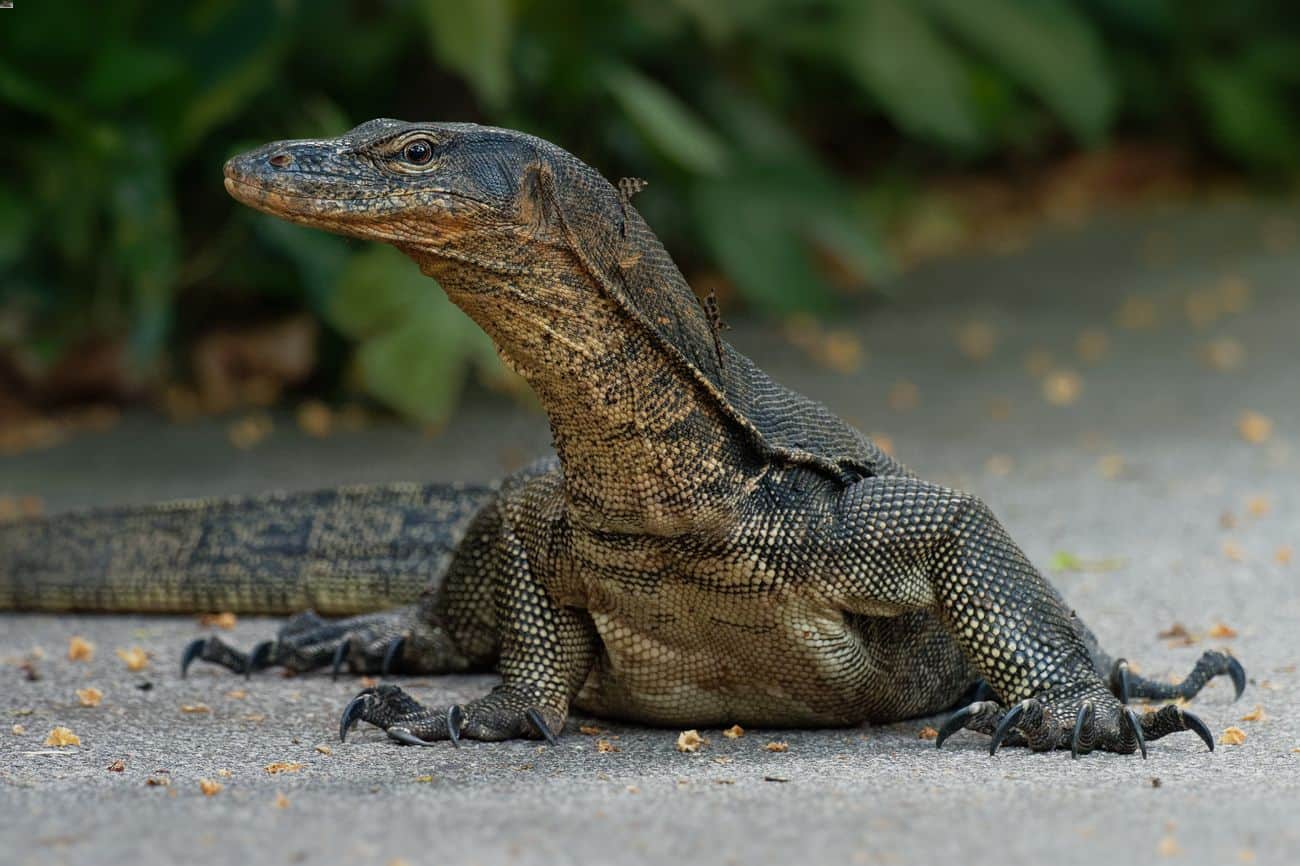Characteristics and Behavior of Asian Water Monitors in Florida

Asian water monitor florida – The Asian water monitor (Varanus salvator) is a large, semi-aquatic lizard native to Southeast Asia. It has been introduced to Florida and has become established in the wild. Asian water monitors are opportunistic predators that feed on a variety of animals, including fish, reptiles, birds, and mammals. They are also known to scavenge carrion.
Physical Appearance
Asian water monitors are large lizards, with adults reaching an average length of 4-6 feet (1.2-1.8 meters). They have a long, slender body with a powerful tail. Their skin is dark green to black, with yellow or white spots. Asian water monitors have a distinctive head with a long, pointed snout and large eyes.
Habitat
Asian water monitors are semi-aquatic lizards that prefer to live near water bodies. They can be found in a variety of habitats, including swamps, marshes, rivers, and lakes. Asian water monitors use water bodies for thermoregulation, hunting, and shelter.
Diet
Asian water monitors are opportunistic predators that feed on a variety of animals. They have been known to eat fish, reptiles, birds, mammals, and carrion. Asian water monitors are also known to eat human food, including garbage and pet food.
Behavior
Asian water monitors are shy and secretive lizards. They are typically active during the day, but they may also be active at night. Asian water monitors are good swimmers and climbers. They are also known to be aggressive when threatened.
Impact of Asian Water Monitors on Florida’s Ecosystem
The introduction of the invasive Asian water monitor (Varanus salvator) into Florida’s ecosystem has had far-reaching ecological consequences. These apex predators compete with native wildlife for resources, prey on a wide range of animals, and facilitate the spread of non-native species.
Competition and Predation
- Asian water monitors compete with native predators, such as alligators and crocodiles, for food and habitat. They are known to prey on native bird species, turtles, snakes, and even small mammals.
- Their large size and aggressive nature allow them to dominate feeding grounds and displace native predators, leading to a decline in biodiversity.
Spread of Non-Native Species, Asian water monitor florida
- Asian water monitors are known to carry and spread non-native plants and animals, including invasive plant species and parasites.
- They can transport these species to new areas through their feces or by clinging to their bodies, contributing to the spread of invasive species and potentially disrupting native ecosystems.
Management Strategies
- Efforts to control the Asian water monitor population include trapping, hunting, and habitat modification.
- Successful management strategies have involved community involvement, targeted removal programs, and habitat restoration to reduce the impact of these invasive predators on Florida’s native wildlife.
Public Health and Safety Concerns: Asian Water Monitor Florida

Asian water monitors are apex predators that can pose a significant risk to humans. Their powerful jaws and sharp teeth can inflict severe bites and lacerations. Furthermore, they are known to carry diseases that can be transmitted to humans through bites or contact with their saliva or feces.
Bites and Scratches
- Water monitor bites can cause deep wounds and require medical attention.
- Their claws are also sharp and can cause painful scratches.
- It is crucial to seek medical attention immediately if bitten or scratched by a water monitor.
Disease Transmission
- Water monitors can carry diseases such as salmonella, E. coli, and cryptosporidium.
- These diseases can be transmitted to humans through contact with the monitor’s saliva, feces, or contaminated water.
- Symptoms of these diseases can include diarrhea, vomiting, and fever.
Public Education and Outreach
Public education and outreach programs are essential for raising awareness about the risks posed by water monitors and promoting responsible interactions. These programs should focus on educating the public about:
- The potential risks of interacting with water monitors.
- The importance of maintaining a safe distance from these animals.
- The dangers of feeding or harassing water monitors.
- Proper disposal of food waste to avoid attracting water monitors.
Best Practices for Avoiding Encounters
To avoid encounters with water monitors, it is important to follow these best practices:
- Maintain a safe distance from water monitors.
- Never approach or attempt to handle a water monitor.
- Do not feed or harass water monitors.
- Be aware of your surroundings and look for water monitors before entering the water or walking through dense vegetation.
- Report any sightings of water monitors to the appropriate authorities.